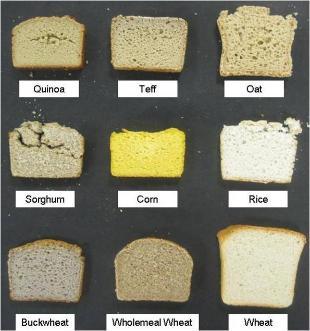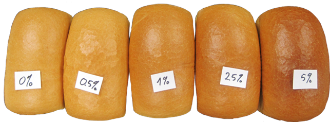Cereal Research

Cereal research
- Tasty and healthy gluten-free bakery products and pasta - improved products for wide consumer acceptance
The market for gluten-free products, which is predominately served by small and medium sized enterprises (SMEs), showed considerable growth in the last years. However, the consumer acceptance of respective products is still limited by their insufficient taste, texture and mouth feel.
During this two year EU project multilateral cooperation between food producers, ingredient providers and our Cereal Sciences group provided required research and development resources as well as scientific knowledge. Alternative ingredients, namely plant proteins and hydrocolloids, were assessed to replace gluten and to form similar network structures in bakery products and pasta. The interaction of different components in the recipes during baking and pasta processing and their influence on the texture and flavour formation was analysed in order to allow specifically improvements. Sensory improvement was ensured by using proper raw materials, aromatic malts or sourdoughs. Evaluation of consumer preferences, acceptance and needs was an integral part of the research and allowed target-oriented food developments and promised well accepted products. The new products have the potential to generate extra annual turnover and additional employment at the SMEs involved. This allows SMEs to participate in the profitable market sector and concurrently improve their competitiveness. Society will also benefit because Coeliac patients as well as healthy consumers will have access to a wide pattern of tasty gluten-free foods which will make the diet and life of Coeliac disease patients easier.

- Sourdough starters and microbial metabolites
Our research in the area of lactic acid bacteria has not only shown that the flavour profile of gluten-free cereal products is significantly improved, it was also possible to by specifically selecting Lactic acid bacteria with proteolysis activity to reduce possible cross contamination with gluten-containing cereals. Methods such as size exclusion HPLC and cereal proteomics were applied in this approach. Lactic acid bacteria (LAB) which produce EPS (Exopolysaccharides, which prebiotic properties) as well as LAB with antifungal properties have been successfully used. Methods applied here ranged from identification of the strains using molecular biological techniques to the isolation and characterisation of Exopolysaccharides and their impact on product texture (HPLC, fundamental rheology, ultra-structural analysis).
- Malted grains as baking ingredients
Malted cereals and pseudocereals can be used as a source of enzymes in food processing. Germination also improves the sensory and nutritional properties of grains, making malted gluten free grains a potential ingredient for improving the nutritional profile of gluten free products. Recent research has shown that oat malt can be used to improve the quality of both wheat and gluten free bread. In wheat dough, oat malt weakens the extensional properties of dough, but still increases the loaf specific volume and does not damage the crumb grain as barley malt does at high concentrations, possibly because of an improvement of gas cell stability due to a high lipase activity. Oat malt influences the properties of gluten free bread strongly. Low concentrations increase the bread volume and form a more open crumb, but a collapse of the crumb occurs when overdosed.

- Salt, fat and sugar reduction in bakery products
- Utilisation of brewing by-products
